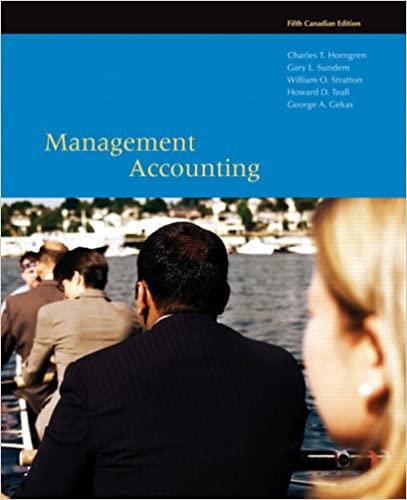Suppose a tour guide approached the general manager of The Agawa Canyon Railway with a proposal to
Question:
Suppose a tour guide approached the general manager of The Agawa Canyon Railway with a proposal to offer a special guided tour to the agent’s clients. The tour would occur 20 times each summer and be part of a larger itinerary that the agent is putting together. The agent presented two options: (1) a special 65 kilometre tour with the agent’s 30 clients as the only passengers on the train, or (2) adding a car to an existing train to accommodate the 30 clients on the 65 kilometre tour.
Under either option Agawa Canyon would hire a tour guide for $150 for the trip. Agawa Canyon has extra cars in its switching yard, and it would cost $40 to move a car to the main track and hook it up. The extra fuel cost to pull one extra car is $0.20 per kilometre. To run an engine and a passenger car on the trip would cost $2.20 per kilometre, and an engineer would be paid $400 for the trip.
Amortization on passenger cars is $5,000 per year, and amortization on engines is $20,000 per year. Each passenger car and each engine travels about 50,000 kilometres a year. They are replaced every eight years.
The agent offered to pay $30 per passenger for the special tour and $15 per passenger for simply adding an extra car.
1. Which of the two options is more profitable for Agawa Canyon?
Comment on which costs are irrelevant to this decision.
2. Should Agawa Canyon accept the proposal for the option you found best in requirement 1? Comment on what costs are relevant for this decision but not for the decision in requirement 1.
Step by Step Answer:

Management Accounting
ISBN: 9780367506896
5th Canadian Edition
Authors: Charles T Horngren, Gary L Sundem, William O Stratton, Howard D Teall, George Gekas





